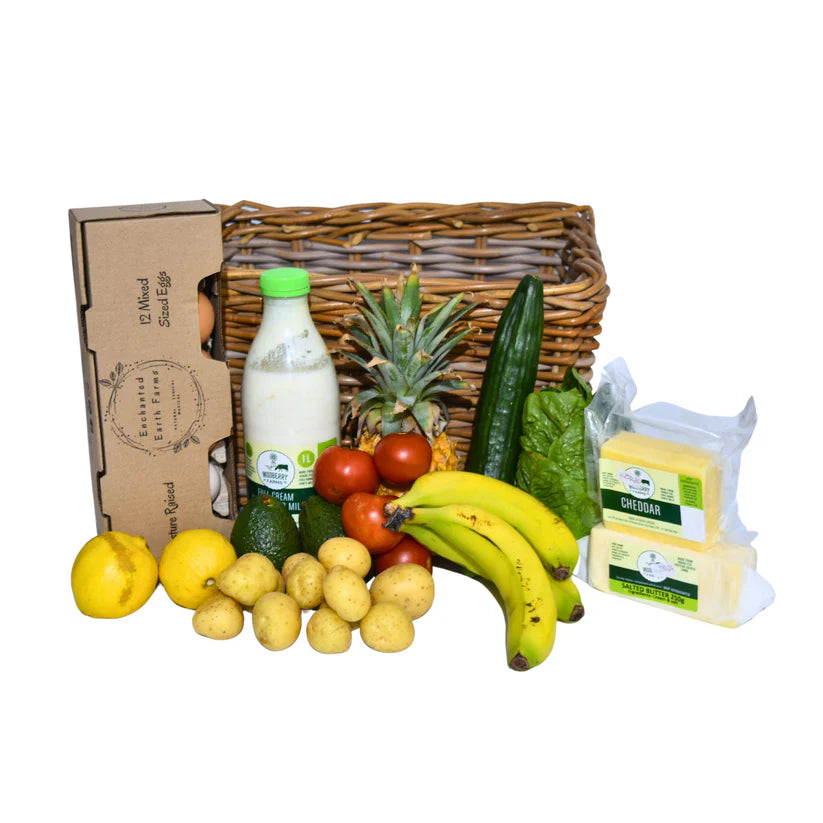Article Summary:
-
Fruit trees thrive in well-drained, fertile soil with a pH level between 6.0 and 7.0, and they require at least six hours of direct sunlight daily for healthy growth and fruit production.
-
When planting, ensure the graft union is above soil level, dig a wide hole to encourage root expansion, and incorporate organic matter to enhance soil quality.
-
Regular watering, appropriate fertilization, and protection from pests are essential for maintaining the health of fruit trees and ensuring a successful harvest.
Growing fruit can be a rewarding and fulfilling endeavor, whether you’re cultivating a small garden or managing an expansive orchard. However, to achieve a bountiful harvest, it’s essential to understand the right conditions that promote healthy fruit development. Factors such as sunlight, soil quality, water availability, climate, and pollination play crucial roles in determining the success of your fruit-growing efforts. This article will explore these key elements in detail, providing you with the knowledge needed to create an optimal environment for your fruit plants. By understanding and implementing the right conditions, you can enjoy a thriving garden filled with delicious organic fruits that are sure to delight your taste buds.
How much light do fruit trees need?
Light is one of the most critical factors influencing the growth and productivity of fruit trees. Most fruit trees thrive in full sun, which typically means they require at least six to eight hours of direct sunlight each day. Adequate sunlight is essential for photosynthesis, the process through which trees convert light energy into chemical energy to fuel their growth and fruit production. Insufficient light can lead to weak growth, reduced flowering, and poor fruit quality, ultimately resulting in a lower yield.
When selecting a location for planting fruit trees, it’s important to consider not only the amount of sunlight the area receives but also the orientation of the planting site. South-facing slopes or areas that are unobstructed by buildings or larger trees tend to receive more sunlight throughout the day. Additionally, be mindful of seasonal changes; trees that receive morning sunlight may benefit from warmer temperatures early in the day, which can help prevent frost damage to blossoms in cooler climates.
For optimal fruit production, it’s also essential to consider the specific light requirements of different fruit tree varieties. While most fruit trees prefer full sun, some may tolerate partial shade better than others. For instance, certain varieties of apple and pear trees can adapt to slightly shadier conditions, but they will still produce better yields with more sunlight. By understanding the light needs of your chosen fruit trees and providing them with an appropriate location that maximizes their exposure to sunlight, you can significantly enhance their growth and fruiting potential.
Preparing the perfect ground for fruit production
Preparing the perfect ground for fruit production is essential for ensuring healthy growth and abundant yields. The foundation of successful fruit cultivation begins with soil quality, which directly impacts root development, nutrient availability, and overall plant health. Start by conducting a soil test to assess pH levels, nutrient content, and soil structure. Most fruit trees prefer slightly acidic to neutral soil with a pH range of 6.0 to 7.0. If your soil is too acidic or alkaline, you can amend it with lime to raise the pH or sulfur to lower it, helping create an ideal environment for fruit trees.
Once you understand your soil's characteristics, it’s important to improve its fertility and structure. Incorporating organic matter, such as compost or well-rotted manure, can enhance soil texture, increase nutrient levels, and improve moisture retention. Aim to mix in several inches of organic material into the top 12 inches of soil before planting. This not only enriches the soil but also promotes beneficial microbial activity that supports healthy root systems.
Additionally, ensure proper drainage in your planting area, as fruit trees are susceptible to root rot if their roots sit in waterlogged conditions. If your soil tends to retain too much moisture, consider building raised beds or mounds to elevate the root zone and improve drainage. When preparing the ground, also take care to remove any weeds or debris that may compete with your fruit trees for nutrients and water. By creating a well-prepared and nutrient-rich growing environment, you set the stage for successful fruit production and help your trees thrive throughout their growing seasons.
Irrigation techniques for thriving fruit
Gathering the necessary equipment and ingredients is a crucial step in the process of making cream from fresh milk. To begin, you will need high-quality fresh milk, preferably whole milk, as it contains a higher fat content that is essential for producing rich cream. If possible, source your milk from a local dairy or farm to ensure freshness and quality. Avoid ultra-pasteurized milk, as the processing can affect the cream separation process.
In addition to fresh milk, you will need a few basic tools to facilitate the cream-making process. A large glass or stainless steel container is essential for holding the milk while it sits undisturbed to allow the cream to rise. This container should be clean and free from any contaminants to ensure the best results. A ladle or spoon will be useful for gently skimming the cream from the top of the milk once it has separated.
You may also want to have a measuring cup on hand if you plan to use specific amounts of cream for recipes. A fine mesh strainer or cheesecloth can be helpful if you wish to strain any remaining milk solids from the cream, ensuring a smooth texture.
If you intend to store your homemade cream for later use, make sure to have airtight containers ready. Glass jars or plastic containers with tight-fitting lids are ideal for keeping the cream fresh in the refrigerator. It’s important to label these containers with the date of preparation so you can keep track of freshness.
Finally, consider having a thermometer available if you want to monitor the temperature of your milk during any heating processes, especially if you're making clotted cream. While this isn’t necessary for simply separating cream from fresh milk, it can be useful in more advanced recipes.
In summary, gathering high-quality fresh whole milk and essential equipment such as a large container, ladle, measuring cup, strainer or cheesecloth, and airtight storage containers will set you up for success in making cream at home. With these ingredients and tools in place, you'll be well-prepared to embark on your cream-making journey.
Understanding hardiness zones for fruit
Understanding hardiness zones is crucial for selecting fruit varieties that can thrive in your specific geographic location. Hardiness zones, established by the USDA, are geographic areas defined by average minimum winter temperatures, providing a guideline for which plants are most likely to survive the winter in a given region. Matching the right fruit tree variety to your hardiness zone is essential for long-term success, as trees that are not cold-hardy for your area may suffer winter damage or even death.
Before selecting fruit trees, identify your hardiness zone using online resources or local extension offices. Once you know your zone, you can research which fruit varieties are best suited to your climate. Many fruit tree nurseries provide detailed information on the hardiness zones for their trees, helping you make informed decisions. Keep in mind that hardiness zones are not absolute; microclimates within your garden or landscape can create variations in temperature that may influence the suitability of certain fruit varieties. For instance, planting fruit trees near a south-facing wall can provide added warmth, potentially allowing you to grow varieties that are slightly less cold-hardy for your zone.
When considering hardiness zones, also take into account other factors such as the length of the growing season, humidity levels, and the frequency of late spring frosts, as these can impact fruit production. In addition to selecting the right varieties, proper planting techniques and winter protection measures can help improve the cold-hardiness of your fruit trees. Mulching around the base of trees, wrapping trunks with protective materials, and providing shelter from harsh winds can all help mitigate the effects of cold weather. By understanding your hardiness zone and carefully selecting fruit varieties that are well-suited to your climate, you can increase your chances of enjoying a successful and bountiful harvest.
Ensuring successful fruit set
Ensuring successful fruit set is essential for maximizing the yield and quality of your fruit trees. Fruit set refers to the process by which flowers develop into fruit after pollination, and several factors influence this critical stage. One of the most significant aspects is pollination, which can be facilitated by wind, insects, or even birds. Many fruit trees are self-pollinating, meaning they can produce fruit with pollen from their own flowers, while others require cross-pollination from different varieties to achieve optimal fruit set. To enhance pollination, consider planting compatible varieties nearby or attracting pollinators such as bees by incorporating flowering plants into your garden.
In addition to ensuring adequate pollination, it’s important to provide the right environmental conditions during the flowering and fruit-setting stages. Temperature plays a crucial role; most fruit trees require specific temperature ranges for successful flowering and fruit development. Late frosts can damage blossoms and reduce fruit set, so it's wise to monitor local weather patterns and take precautions, such as covering trees during unexpected cold snaps. Adequate sunlight is also vital, as it supports photosynthesis and energy production necessary for flower and fruit development.
Furthermore, proper nutrition and watering practices contribute significantly to successful fruit set. Fruit trees need a balanced supply of nutrients, particularly nitrogen, phosphorus, and potassium, which support healthy growth and reproductive processes. Conducting soil tests can help you determine any nutrient deficiencies and allow you to amend the soil accordingly. Additionally, maintaining consistent moisture levels is crucial during the flowering period; both under-watering and over-watering can stress the trees and negatively impact fruit set. By focusing on these key factors—pollination, environmental conditions, nutrition, and watering—you can create an optimal environment for your fruit trees to achieve a successful and abundant fruit set.










